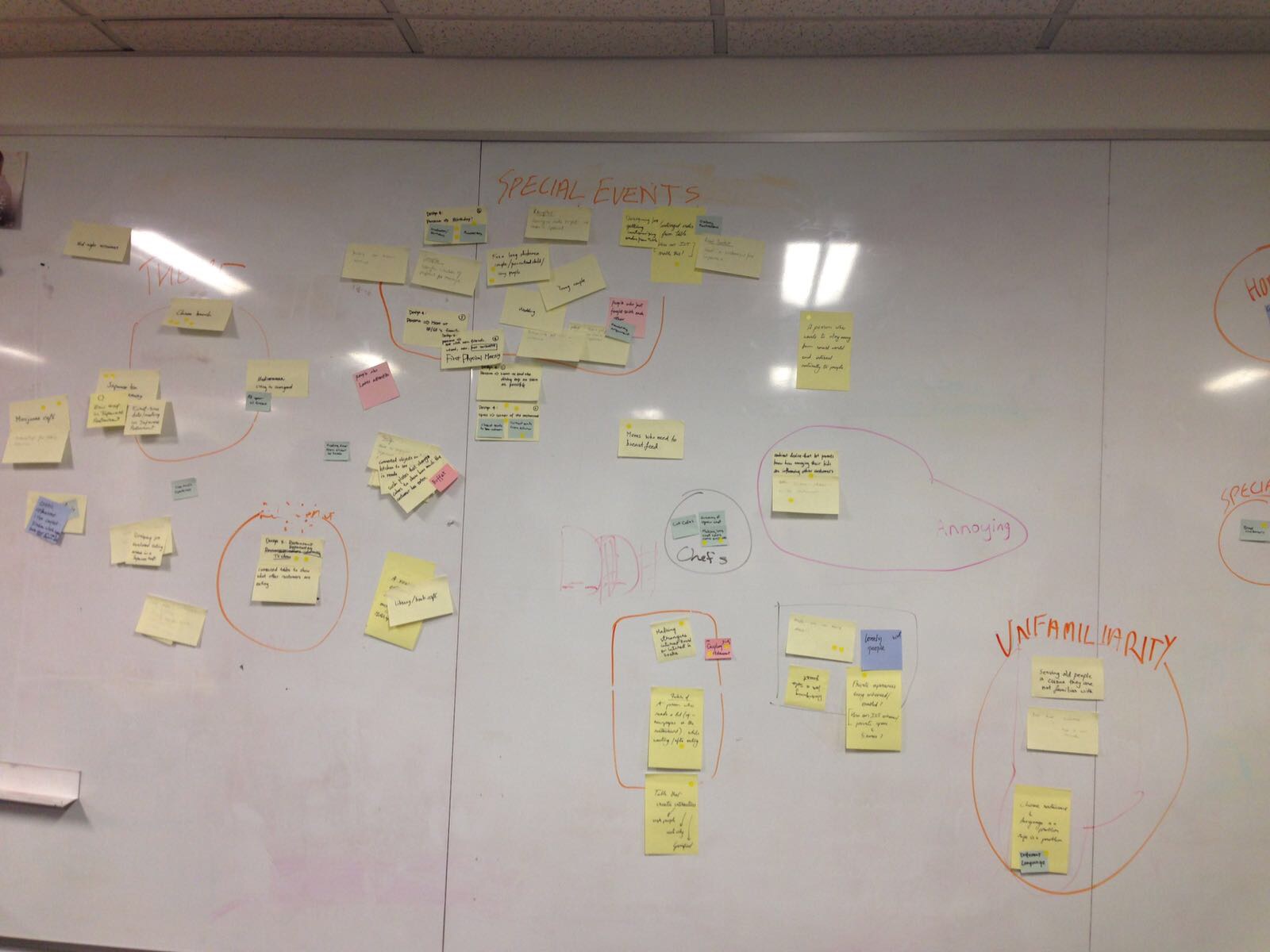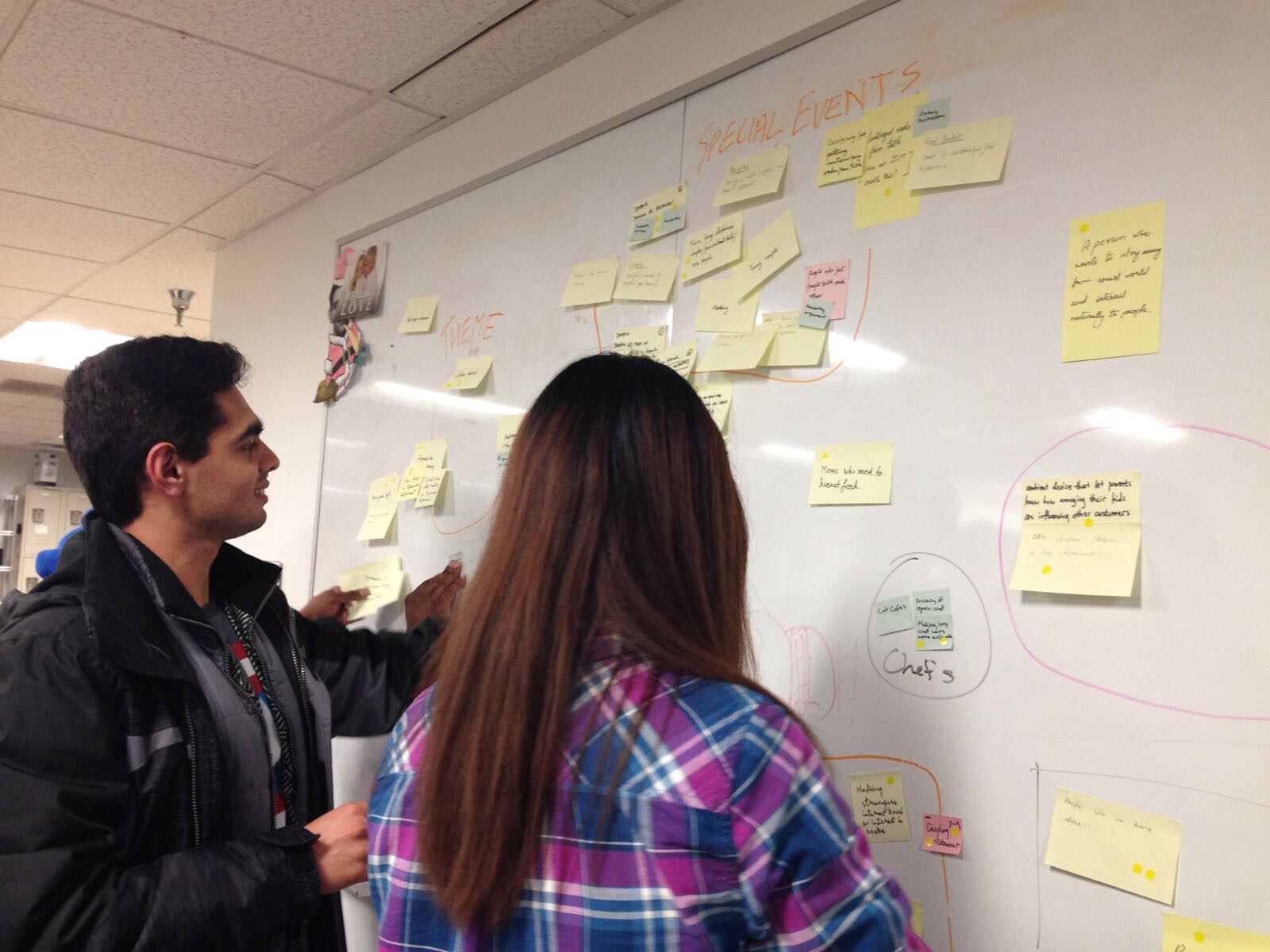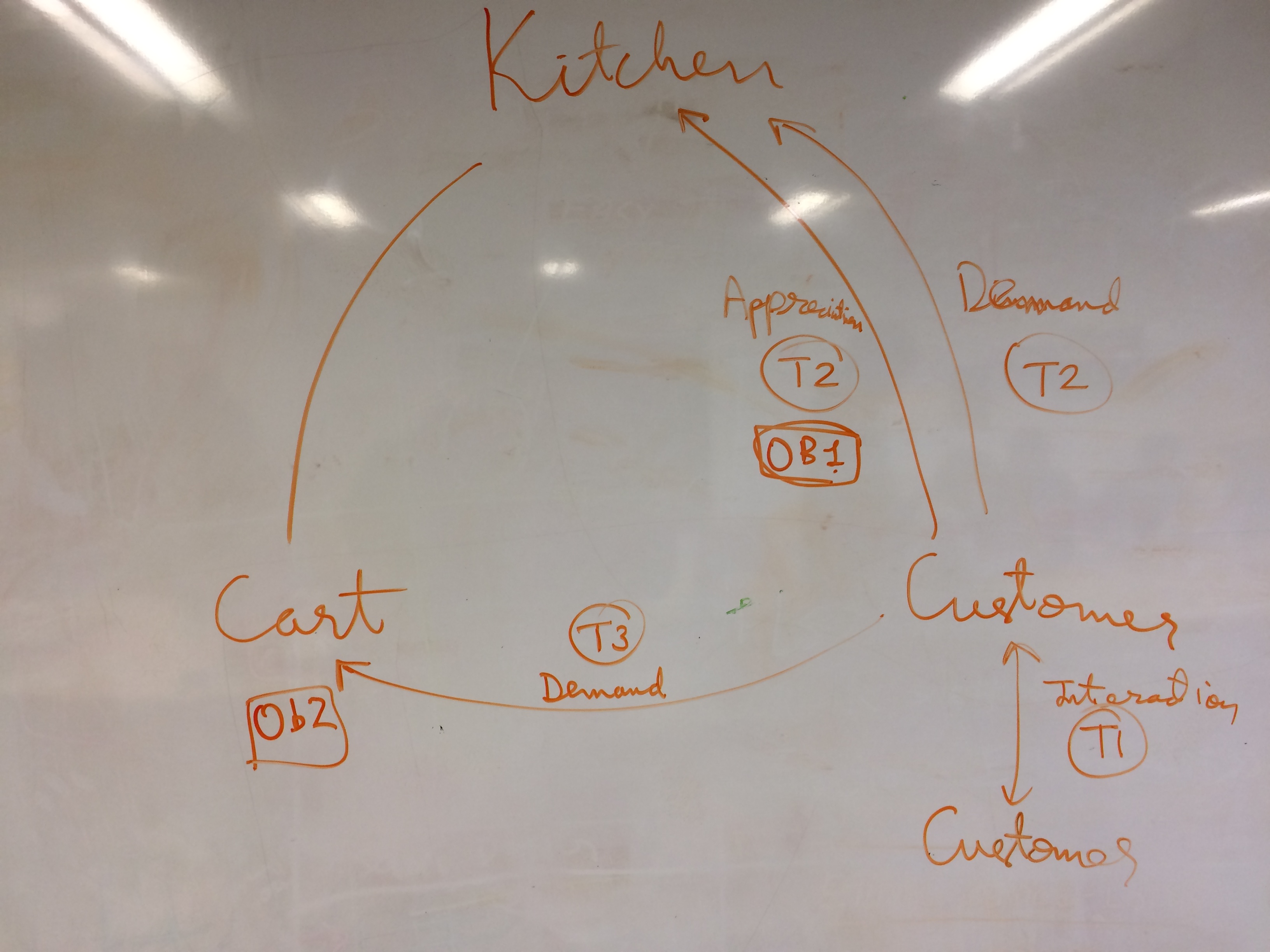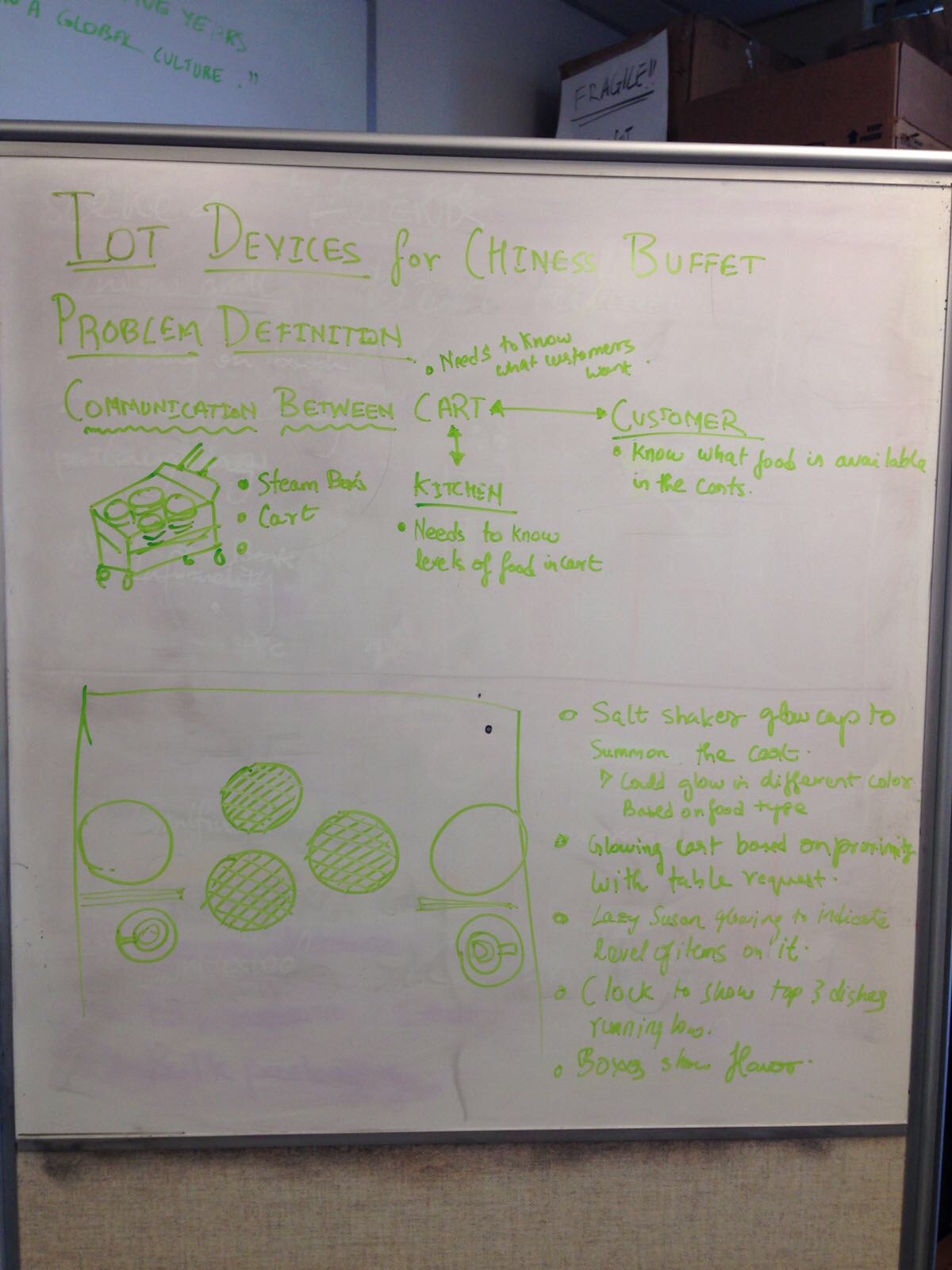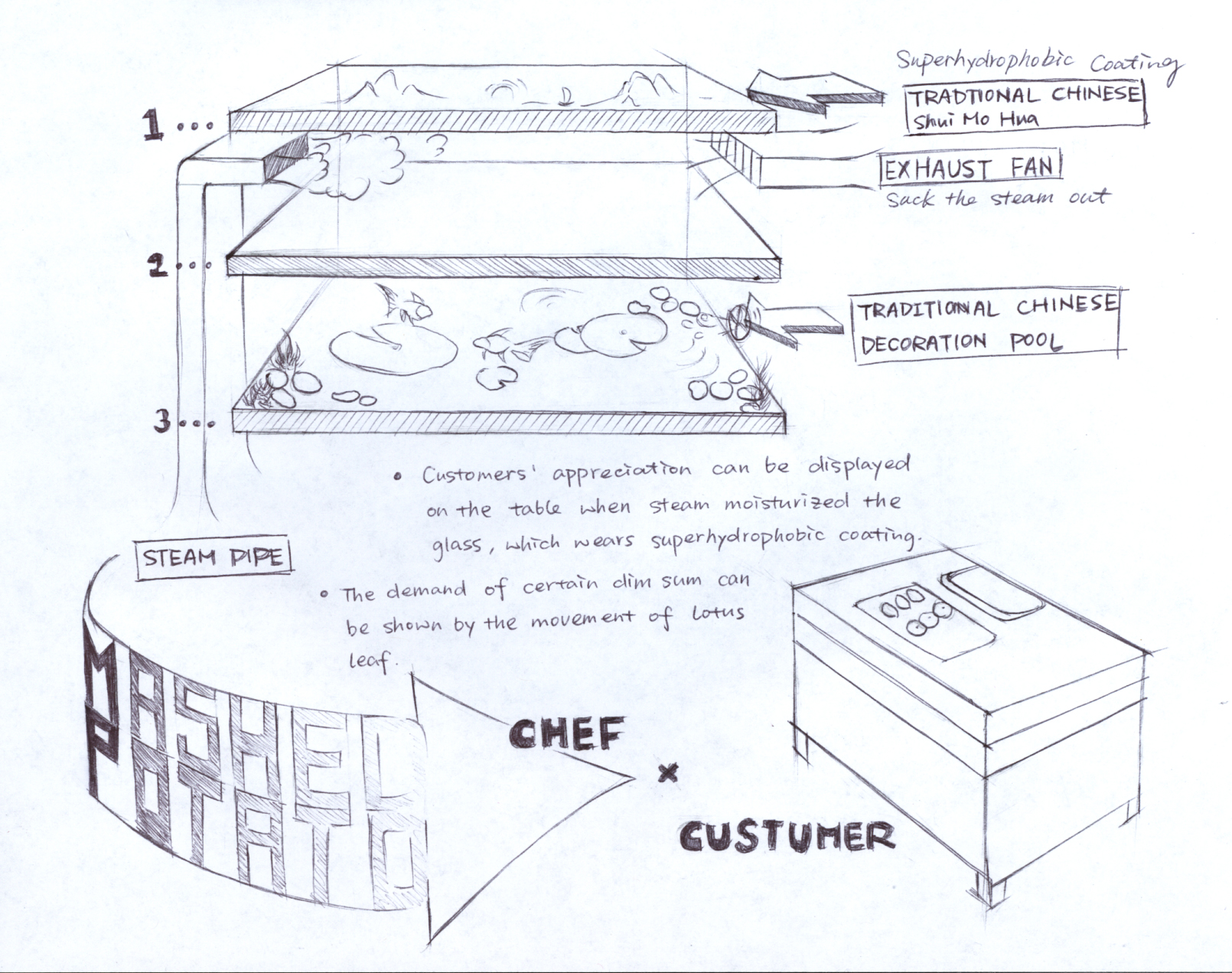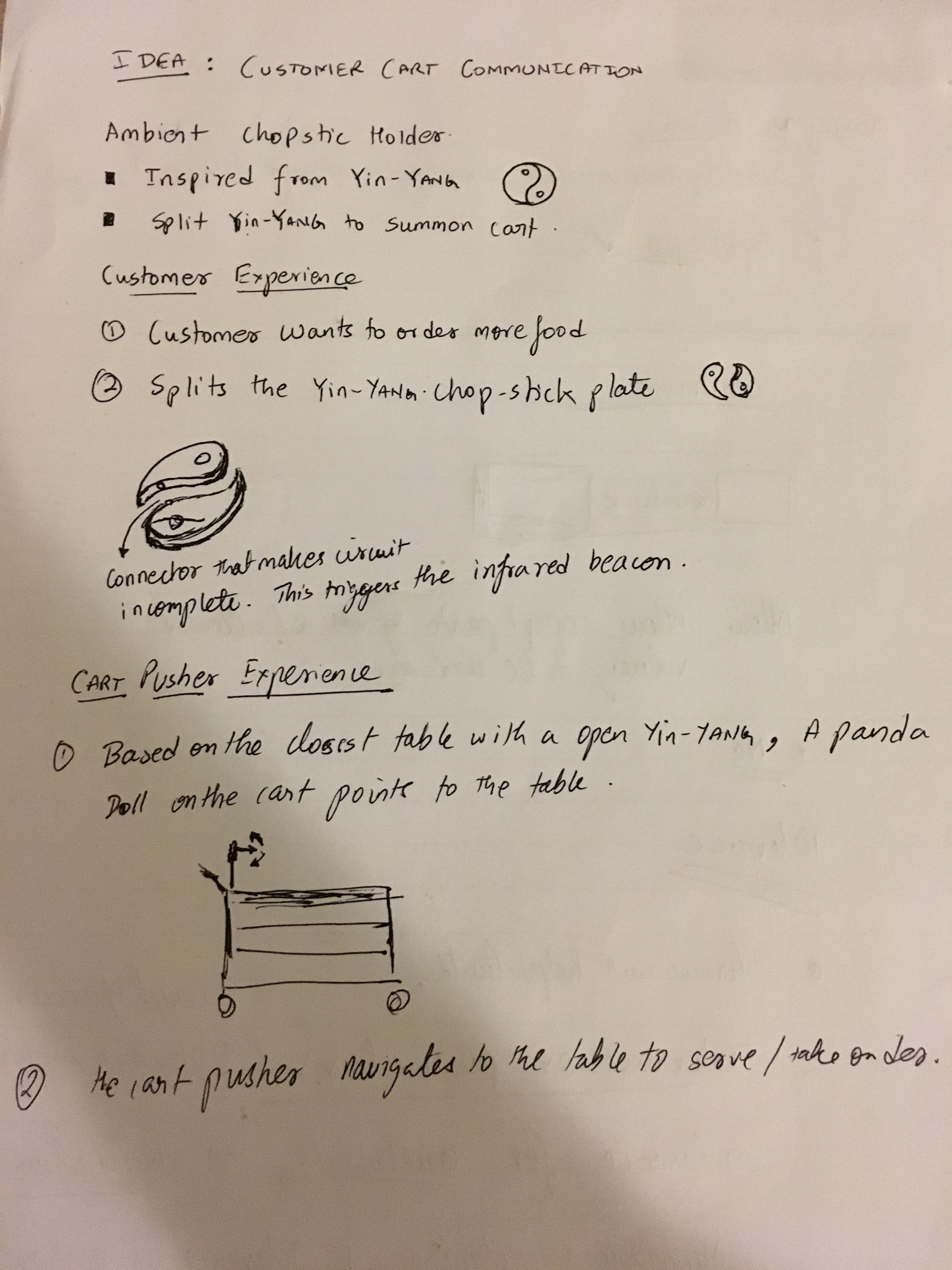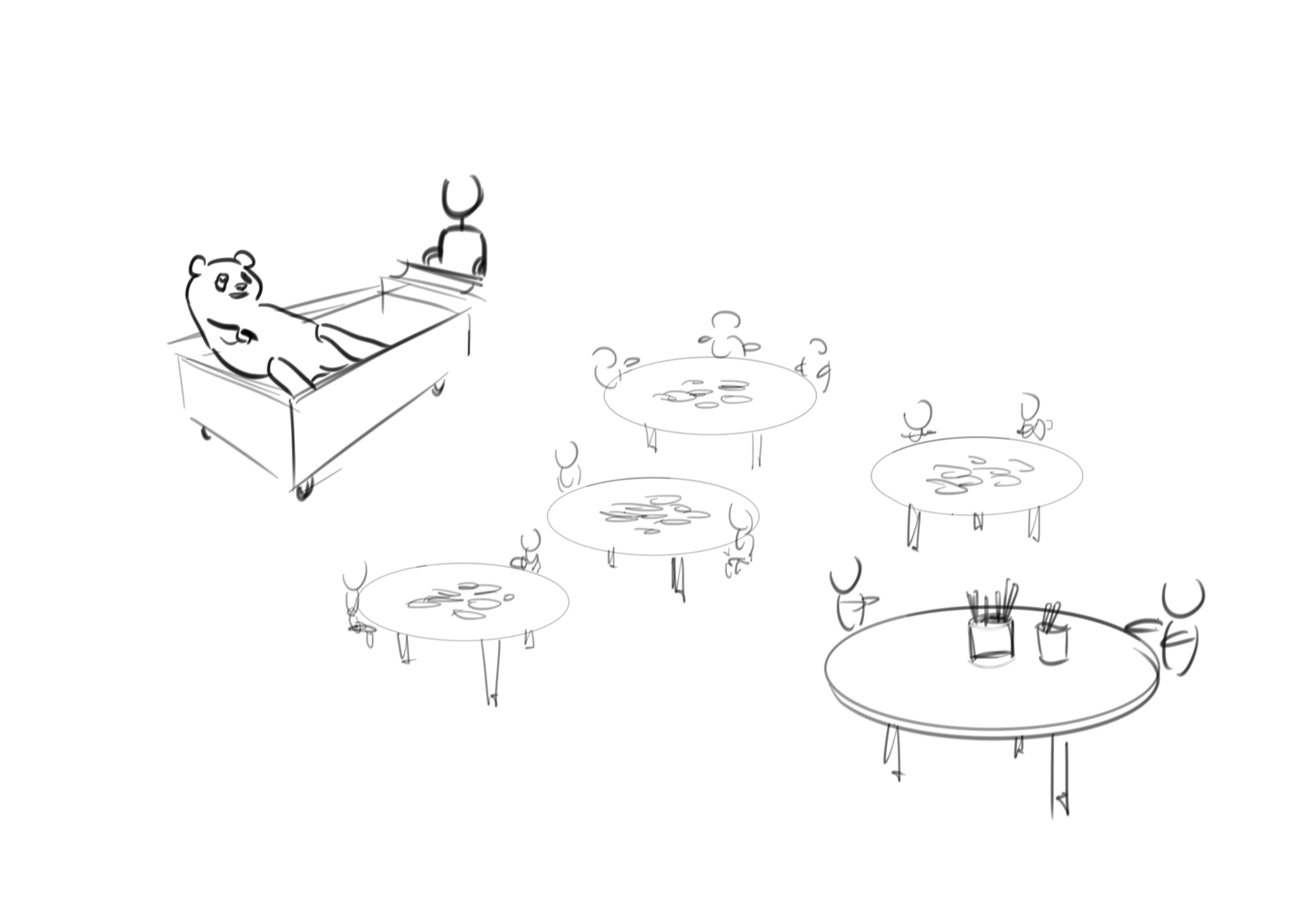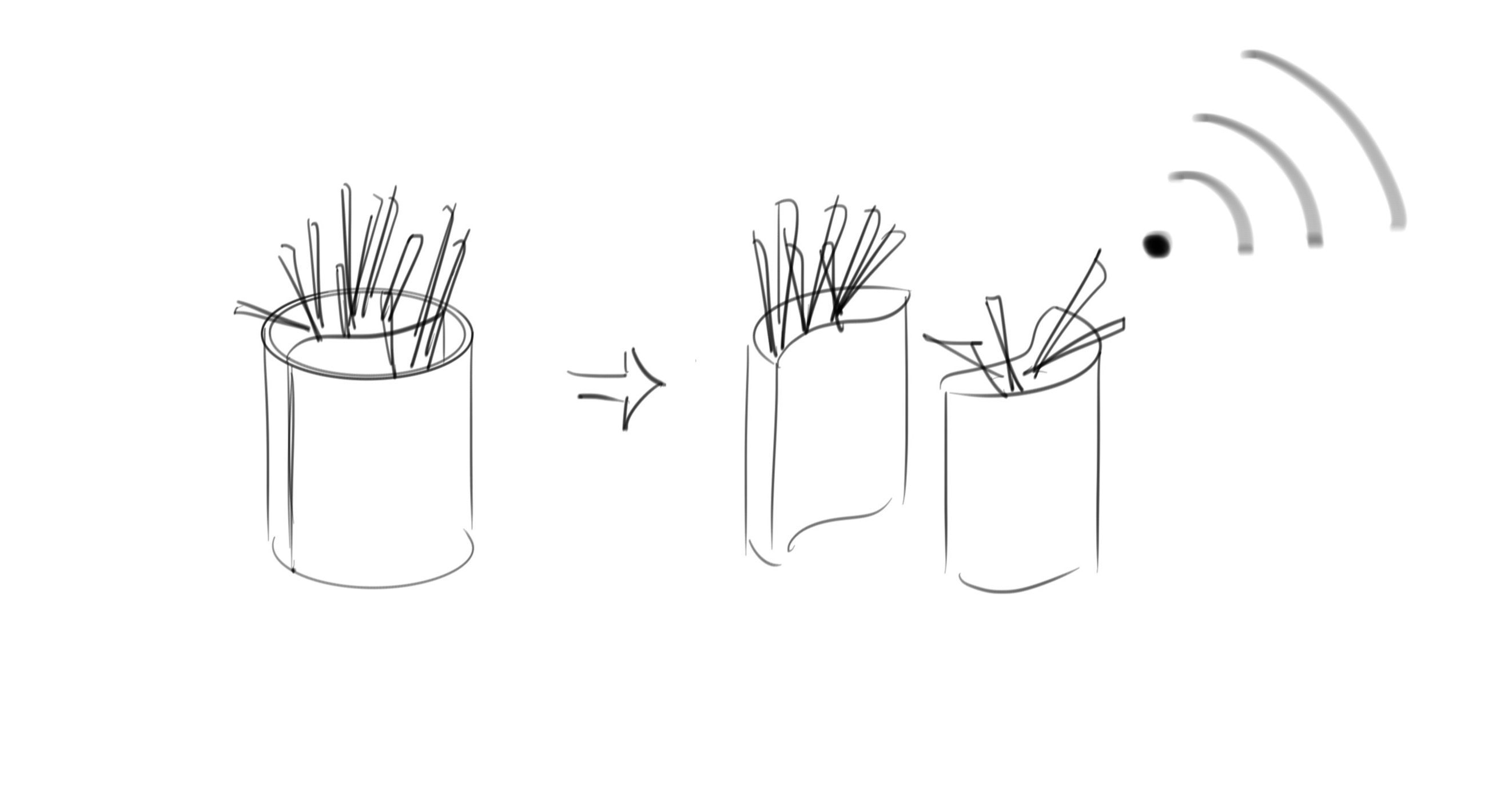Initial Ecosystem Proposal
Team Mashed Potatoes is working on the traditional Chinese brunch restaurants called YumCha/Dim Sum. The differentiation factor for these restaurants is that the customer base is largely the elderly population who sit there throughout the day have a good time with their friends. The server moves around with carts containing food baskets. These carts are stopped by the customers if they want more food. Ideally, a food basket is shared by a number of people.
In this project, we are focusing on primarily three interactions. Firstly, since customers do not come in close contact with kitchen a lot, how could IoT help them in setting up a channel to the chef, for them to pass on appreciation for the food or shortage of food. Secondly, how can ambient devices be put into place to guide the trolley to the table which needs food rather than the customer having to shout out to them. Thirdly, since this is a space for social interaction, how can we use ambient devices to motivate people to stay away from their smart devices and interact more with others.
